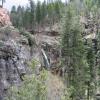Sign in to follow this
Followers
0

Cherry Creek Road FR 203 Permanent Closure
By
arizonaelkhunter, in The Campfire

By
arizonaelkhunter, in The Campfire